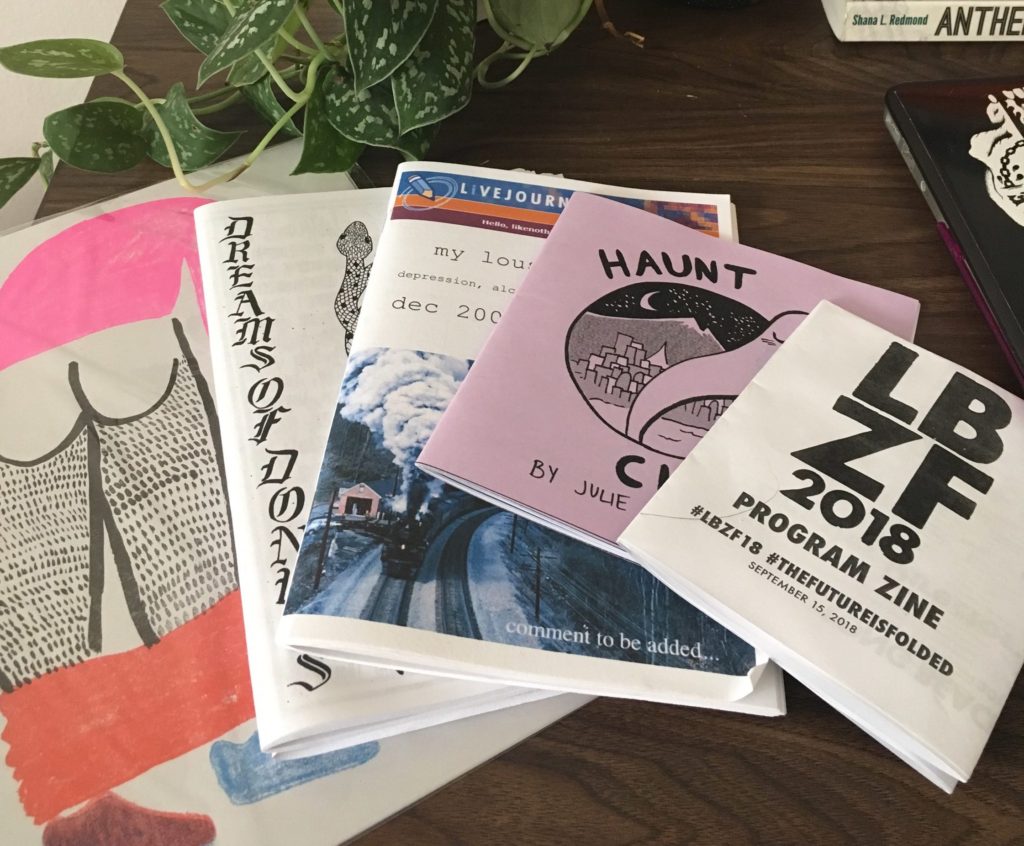
“I need to release this…”
“I need someone to see this…”
I watch organizers of Long Beach Zine Fest run around everywhere, answering questions, and frantically organizing people and things. I stand in front of a giant printed map like I’m a lost 90s tween looking for Hot Topic at the Westminster Mall. I’m looking at maps a lot lately, trying to calibrate myself, swirling in endless options full of unlived experiences and unknown potential.
“Do you like the map?” she asks, noting that she made it. It was incredibly functional. That’s the beauty of a zine fest. Everything was made by somebody, down to the signage. Everything is always made by somebody, but on this day we’re not separated by factories or cyber walls or an economic system that seeks to make creators invisible and voiceless. My roommate Bree and I compliment her work, dragging our fingers like planchettes over the layout, across the smooth print as if spirits would guide our hands to the Arts n’ Crass table. In the moment I miss being part of that hectic action of organizing, but I am thrilled to not be responsible for anything other than becoming inspired. Free to be guided rather than guide.
The small Expo Art Center hall is filled with a sea of enthused people making their way through tables of tired yet excited artists. Awkward meetings ensue. Tables fill up with onlookers. There is a DJ spinning in an adjacent room. A band tuning guitars in the periphery. A security guard by a makeshift bar who from one angle looks like a Tom of Finland character, from another, a Flogging Molly roadie. Young artists sit on the floor laying their wares out in front of them, unauthorized stations serving swapmeet chic meets big city card dealer realness. Step right up.
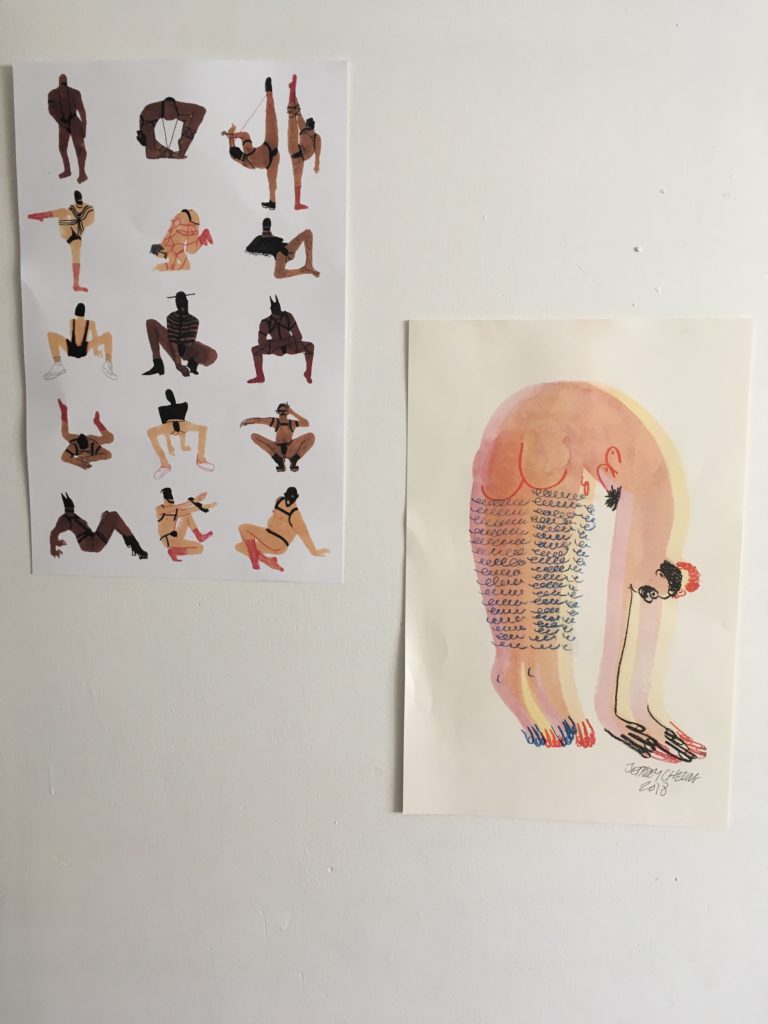
Everyone is someone. Everyone is no one.
I wander the aisles. A man plunks out fragmented chords on a Craigslist piano in the hallway. Is this art? Does it fucking matter?
I meet Jeff Cheung who runs Unity Zines. I tell him how much his music means to me. How his queer skateboarding Instagram stories make the 13 year-old dyke obsessed with Elissa Steamer that still lives inside of me feel closer to whole. We chat about the awesome Brontez Purnell zines he’s re-pressing, mutual friends, and The Smell. I buy a print to put up immediately at my new apartment.
I stumble upon the Dreams of Donuts table and finally meet Heather Wreckage. I first picked up her work five years ago out of a cardboard box in the corner of 1234 Go Records because I was so drawn to the stark black image of an executioner from across the room. Her autobiographical art zines are like a love letter to Oakland routed through punk and activism. I watch her gracefully go through each of her issues on the table, explaining them to a young man who buys nothing. “Maximum Rock n Roll usually likes my zines,” she says, “but this one got a bad review because it was too dark.”
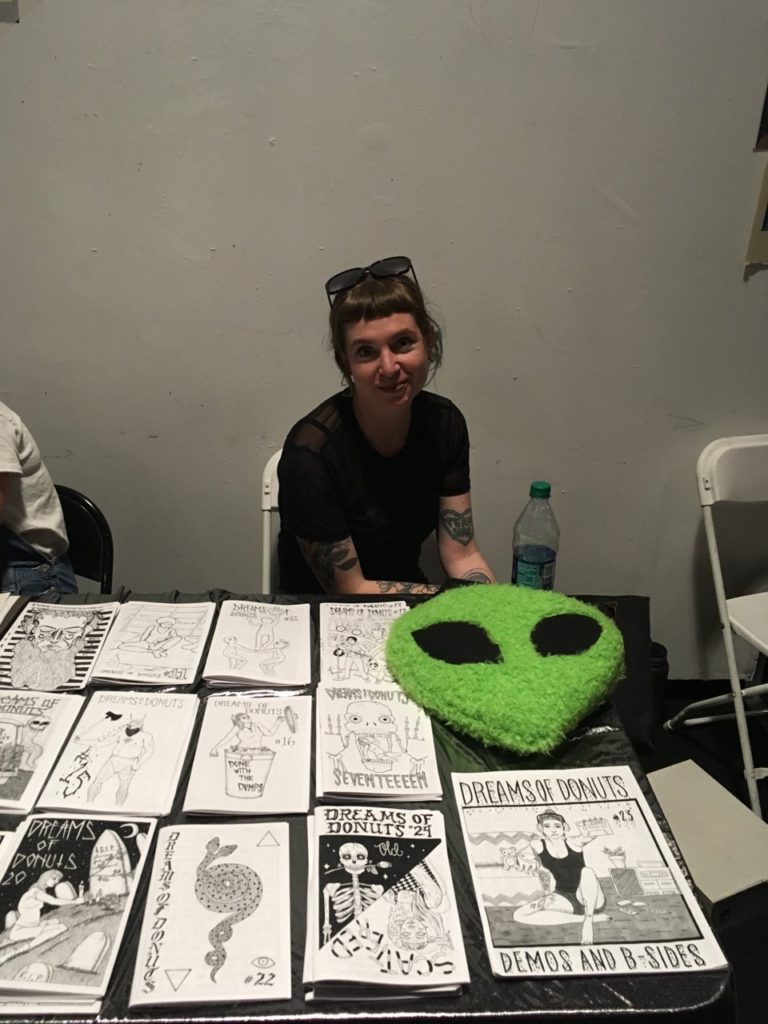
I sit in on a panel on self-publishing as a form of self-care. I arrive way too early, sitting in the corner as the room fills up right at 2:30 with mostly women in their early 20s. “I don’t ever know what to do with my hands,” says Jason, a painter who loves to use animals in his work to imagine freedom. For him zines can be like busy work, like cleaning your house, ultimately therapeutic. Elise uses zines to share cancer resources and process greif. Kim uses them to share messages of body positivity. Xicanx Crybaby uses them to process identity, illness, and abuse and build community with likeminded people.
The panelists talked a lot about that internal, dream like world that zines help people access. “I’m lost too,” says Kim who damns inaccessible practices of so called self-care like drinking wine and going to Europe over doing internal work. “You’re not doctors,” the moderator says, “but what you are doing is a service. Don’t discredit that.”
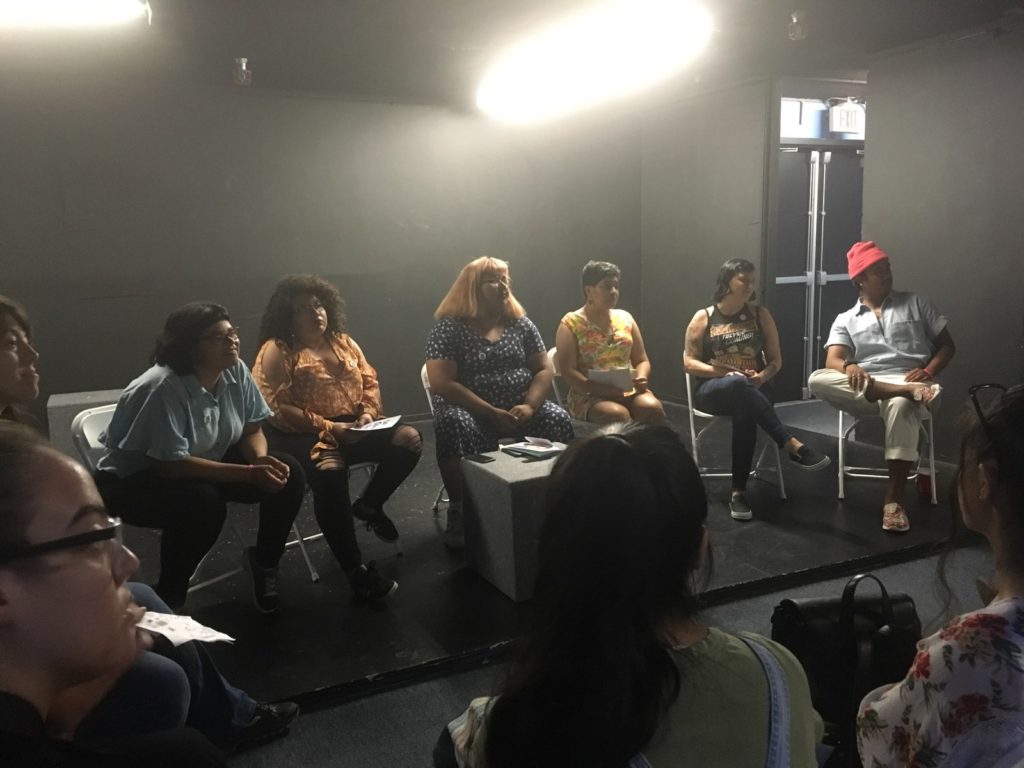
In zine culture vulnerability is an artform and a necessary part of healing for many. Anonymity and the rush of a highly individualized, specific experience are proponents for reflection and connection. Once something written in words or expressed in art its free to leave one body, those words and drawings now imbued with their own agency, as fearless as the person who scrawled them into the ether.
Feeling lost? Zines give people a physical way to process and locate. To touch and ground in a physical here and now. To curate fragments into ideas, stories, art, and even identities. Each new sticker, print, and new Instagram account followed enables people to re-imagine their physical and digital spaces to reflect their interiority, to connect with their own pasts and their dream futures.
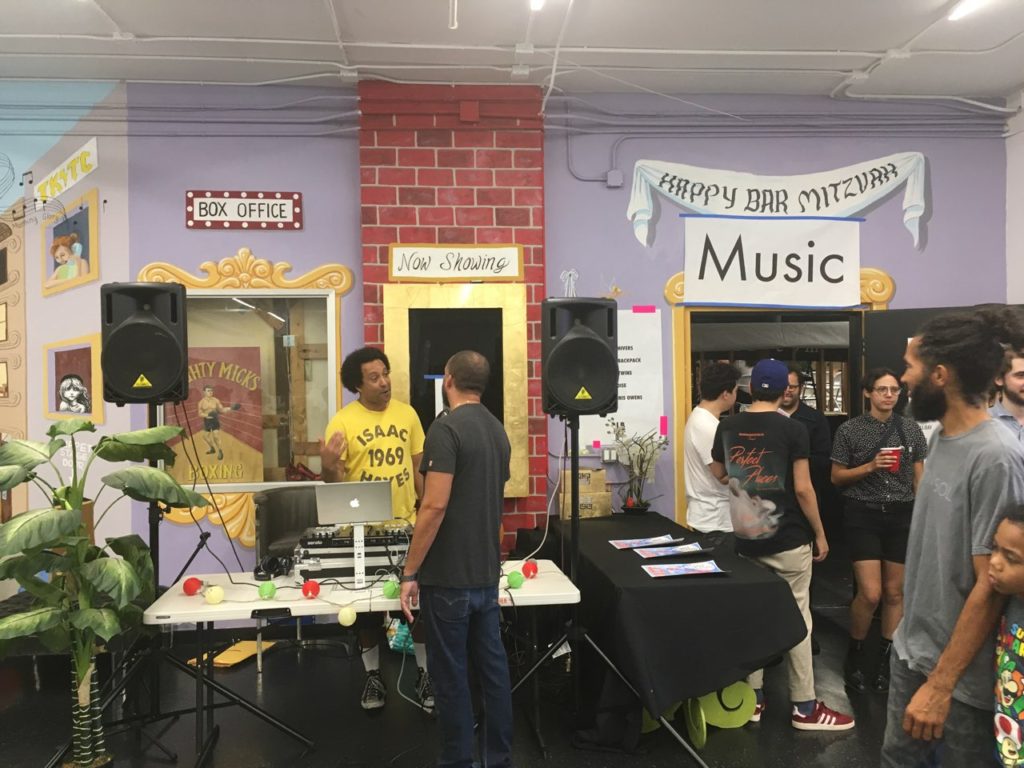
A Zinefest like LBZF is the Scholastic book fair of adult freaks and artists and alchemists. Gold leaf made of tin foil. Poetry and graphic novels made from trauma. Communities and collectives forged from isolation. My favorite day of elementary school revamped for my early 30s, with Darcy Crash Zine Distro and vegan soul food replacing Berenstain Bears and lunch ticket calzones.
Maybe it’s something about living in the digital age and craving human connection and tangible experiences. Maybe it’s the rush of holding freshly printed cardstock that visually touches something inside of you that’s hard to articulate. But whatever the case, printed zines grab the psyche and heartstrings of collectors and creators, connecting people in a complex web forged through art and therapeutic practices of sharing. Independent DIY print literature and art culture is a lifeline. Fortunately for many of us, it’s one that comes with some cute art as memento.


One Reply to “Long Beach Zine Fest Reminds Us Why Handmade Art Still Matters in the Digital Age”